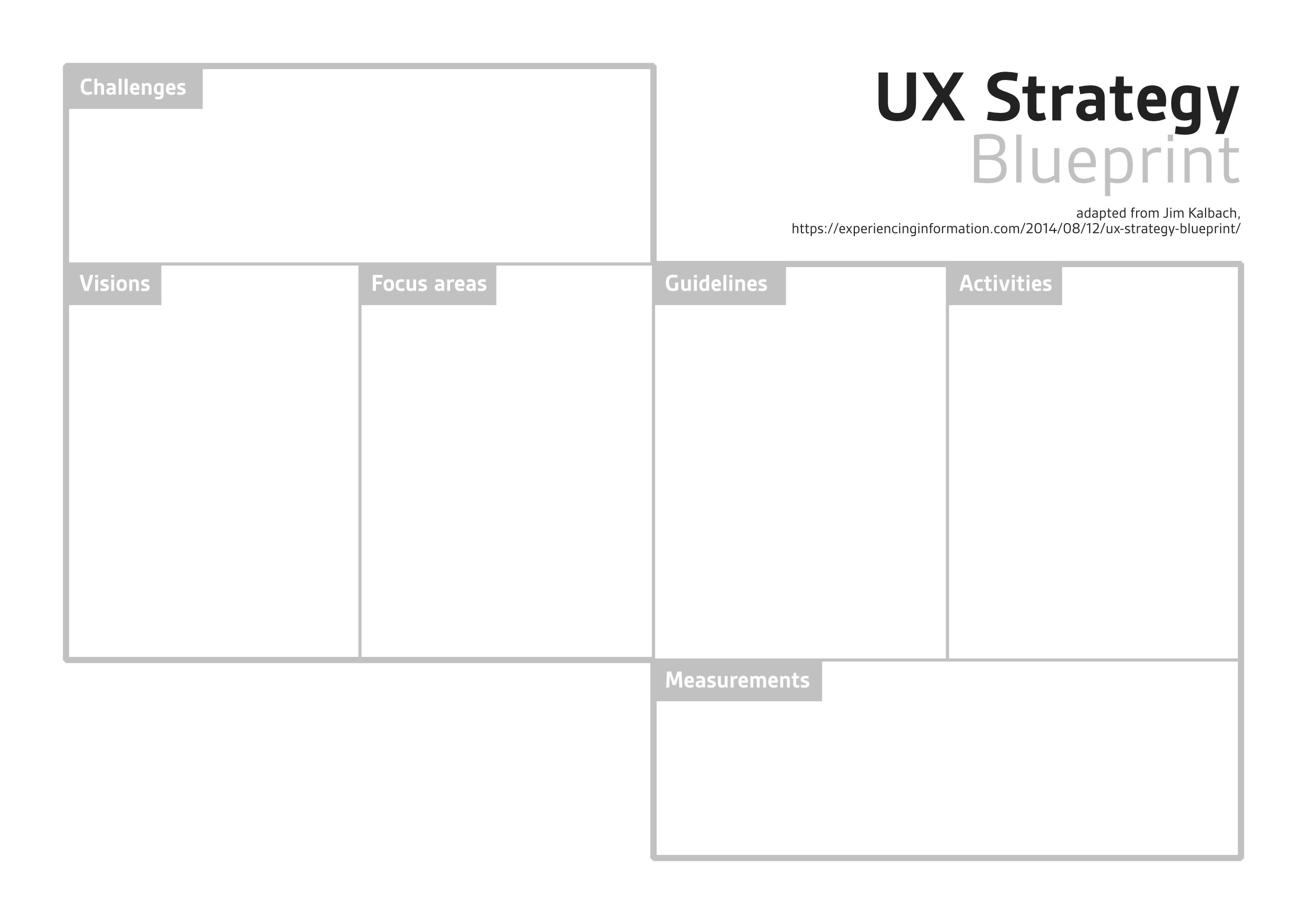Defining strategies to systematically create positive experiences UX Vision and UX Strategy: The path to seamless, positive experiences
Positive experiences are becoming increasingly important for companies and, especially in times of increased competition, can be a decisive differentiator that sets an organization apart from others. But how can organizations ensure that everyone aligns in the same direction and contributes to positive experiences for their users or customers? Luckily, UX visions and UX strategies are useful tools for achieving this alignment. What do you need to consider when creating UX visions and UX strategies?
User experience (UX) and customer experience (CX) contribute significantly to the success of a product or service. For this reason, they are well established in digital product design. However, experiences go far beyond a single product or individual service: If the responses to a support requests are disappointing, what is the value of a great experience when using a website? How we experience the interaction with an organization depends on many individual touchpoints we have with this organization. All of these individual touchpoints combine to an overall impression.
Therefore, organizations correcdtly ask: How can we consistently, reproducibly and (if needed) ready for adjustments create a positive experience across all touchpoints of customers and users with our organization? UX visions and UX strategies are valuable tools to answer this question.
Giving orientation with UX visions
Entrepreneurial activities are similar to sports: If you want to systematically improve, you need to set yourselves an ambitious goal. Without a clear goal, the direction remains unclear.
A UX vision includes a clearly formulated, concrete goal of what user and customer experience should be achieved in the future. A UX vision describes this goal in an appropriate and motivating way. The UX vision acts like a North Star towards which all activities should be aligned. A UX vision therefore has many advantages for an organization:
- It compares the current status with the desired result and ensures that everyone in the organization really wants the same thing. UX visions are, as coach Dominique Winter puts it, "shared mental models": the shared idea of what experience should be created during interaction.
- It communicates that UX professionals can make an important contribution to the organization's success. This generates support ("buy-in") for UX work at management levels.
- Through an emotional appeal, it has a motivating effect across different teams ("Exactly! That's what we want!").
- It is geared towards the organization's business goals and demonstrates how positive user and customer experiences help to achieve these business goals. Here is an example: Let's assume a company wants to increase its own market share. A UX vision can explain how customers recommend the brand to others as "fans" and thus contribute to the company's growth.
How to create a UX vision
In "Quick Guide UX Management", Steffen Weichert, Gesine Quint and Torsten Bartel propose three basic questions that any UX vision needs to answer:
- Perspective: What does the UX vision relate to? UX visions communicate the future on different levels, such as individual products and services, a team or an entire company.
- Goal: What should the UX vision achieve? Is it primarily intended to motivate, convince or create clarity about the direction and priorities of an organization? The UX vision will look different depending on the main purpose.
- Participation: Collaboration is important to take into account as many perspectives as possible and to ensure support for the UX vision at different levels.
UX visions can therefore be created particularly well in a joint workshop to create a vision statement. First of all, everyone involved should be informed about the current status of UX and CX in the organization, based on sound research. The next step is to define an ideal future state, usually with a focus of 2 to 5 years. It helps to collect adjectives as a basis for the UX vision: How should the interaction feel for users and customers? This can be inspired by questionnaires such as the UEQ+ or card sets such as the Interaction Vocabulary. After an individual brainstorming session, the participants can first present their collected adjectives to the team and then use sticky dots to vote on which adjectives have a greater consensus (dot voting).
This collection of adjectives is a good starting point for shaping the UX vision, often initially in a short UX vision statement. Let's assume, for example, that a workshop has identified the adjectives "valuable", "useful" and "reliable". A corresponding UX vision statement could read: "The interactions with our products feel so valuable, useful and reliable for customers that they are enthusiastic about using them. Over time, customers become fans who actively recommend our products to others."
In addition to a UX vision statement, you should also consider other forms to communicate the UX vision. There are no limits to creativity as long as the UX vision has impact. Amazon, for example, is known for its "Working Backwards" method: Before teams work on a new product, they write a press release about the intended result. This helps to focus on the customer's perspective and describe what problem the new product should solve before thinking about features and technology. Other methods from UX, conception and product management can also be used as a UX vision. Examples include a future empathy map, a future journey map or a future code of conduct. The main point is to focus on the future, ideal state in the organization.
Strategies for UX and human-centricity in companies
A UX vision describes the goal and motivates people to start the journey, but does not explain how to get there. This is precisely the task of the strategy. A strategy is about defining possible ways to realize a vision. The term "UX strategy" is very common, but the terms "HCD strategy" (for "human-centered design") or simply "experience strategy" are also used.
What these terms have in common is their focus on the big picture: How can we achieve the vision? Strategies go beyond day-to-day UX activities (tactics) and describe how an organization can bring all its actions together to form a coherent overall picture. The focus is always on how people experience the interaction with the organization (across all departments, products and services). As expert Jim Kalbach defines it, UX strategies create "consistency in the behavior" of everyone involved, and thus increase the chances of creating positive user and customer experiences when interacting with a organization's products, services or employees.

Building UX strategies requires creativity: it's about exploring paths into the future and defining possible obstacles. This works best in a collaborative workshop with a team from different departments and management. Templates such as Jim Kalbach's "UX Strategy Blueprint" can help (available as a pdf download). They define fields for key considerations, to be filled with sticky notes:
- The field "Challenges" describes the difficulties and problems that need to be solved with the UX strategy. To stay with the example from above, it could be that customers have a rather pragmatic relationship with a company's products. How could this relationship become more emotional in order to turn customers into real fans?
- "Visions" defines the target: Where do we want to go? This field should be formulated as concretely and inspiringly as possible. So instead of working with general statements such as "intuitive to use", it helps to describe how customers achieve their goals through intuitive operation and why this is significant for their lives. The UX vision can serve as inspiration here.
- The "Focus areas" field helps you to concentrate on the key areas that are relevant to the UX strategy. These can be groups of customers or specific areas and fields.
- The "Guidelines" deal with basic approaches and guidelines for tackling the challenge. These are mantras that can help all employees decide how to behave in everyday situations in line with the UX strategy.
- "Activities" defines the concrete, daily actions (often called "tactics") to make the vision a reality. For example, a company could decide to first extensively investigate what the deeper motivations of customers are for choosing a particular product. Those responsible could then use these insights to solve the customers' deeper goals ("How do we help our customers to have more time for the essential things?") instead of just focusing on the product itself ("How do we make our product so and so much faster?").
- Strategies cannot exist without measuring success, which is defined in "Measurements". Based on these measurements, the strategy should be iteratively adapted and continuously optimized. For the example above, where we talked about customers as "fans", a metric such as the Net Promoter Score (NPS), which measures the recommendation rate, could be used.
Of course, work on the UX strategy does not stop once the workshop has been completed. The UX strategies must be presented again and again, discussed and continuously optimized as new insights are gained or new ideas emerge. UX strategies are therefore in a constant state of iterative change and remain flexible when adjustments are necessary.
Taking corporate culture into account
UX visions and UX strategies are important tools for organizations, but they are only successful if employees adhere to them in their daily actions. Therefore, it is important to take the organizational culture into account: What makes the organization "tick"? Which behaviors are rewarded? How is success defined? What standards are applied?
A workshop with participants from different departments is useful to capture the organizational culture. You should first talk openly about topics such as communication, cooperation, dealing with criticism and mistakes, rewards and leadership. Central aspects are recorded on sticky notes and grouped together. Different opinions should also be recorded, as culture is not always experienced in the same way. In the next step, it helps to identify which of these aspects are conducive or obstructive to creating positive experiences for users and customers. An example about this: human-centered design needs continuous improvement and implementation of new results. However, an organization also needs an error culture to achieve this: Every person should be allowed to give and receive feedback openly without fear of personal consequences, and external voices should be regarded as valuable input. If such an error culture does not exist, a strategy that presupposes it is unlikely to be successful. However, this is no reason to despair: once you have identified obstacles, you can consider countermeasures. After all, this is precisely one of the aims of a UX strategy: to initiate changes that can promote positive experiences. For example, you could hang up an anonymous "feedback box" so that colleagues do not have to enter into a direct exchange if they notice something negative. It also often helps to establish explicit rules on how communication should take place within a feedback meeting and to specifically state that it is not personal criticism. With these and similar measures, an organization will gradually become better at creating positive experiences for its users and customers.
Conclusion
If organizations want to systematically and reproducibly create positive customer and user experiences, they need to think beyond the individual product or service. What counts is getting the entire organization ready to put the customer or user experience at the heart of its activities. In this regard, UX visions and UX strategies play a central role: They define the direction and path of this transformation.

Note: A version of this article in German was published in t3n 73.

 9 minutes estimated reading time
9 minutes estimated reading time 